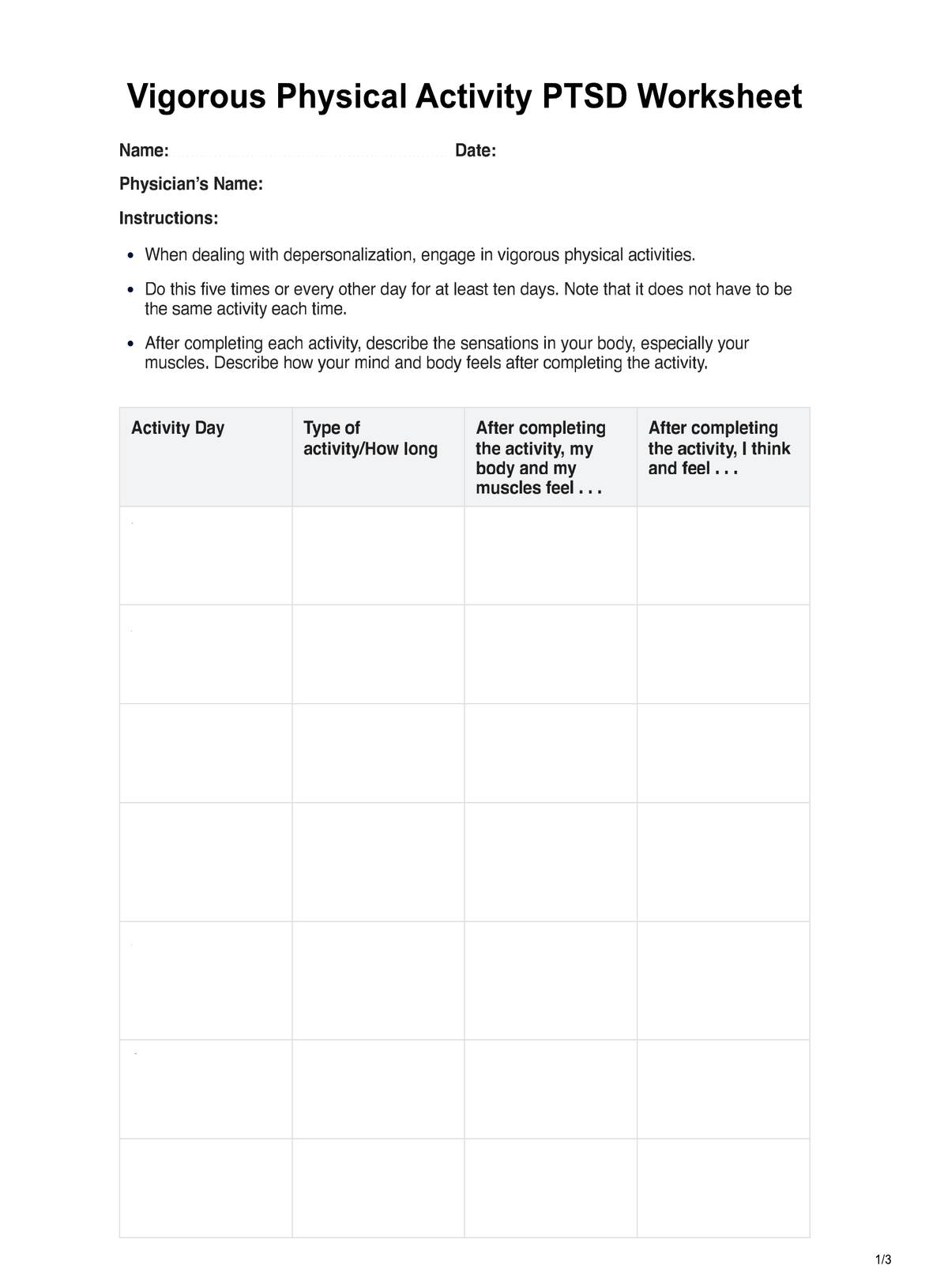Accomplishing the Vigorous Physical Activity PTSD Worksheet can take at least 15 minutes after every exercise and longer if the client isn’t used to reflecting on their thoughts, feelings, etc. To accomplish the whole worksheet, it will take at least ten days to complete.












